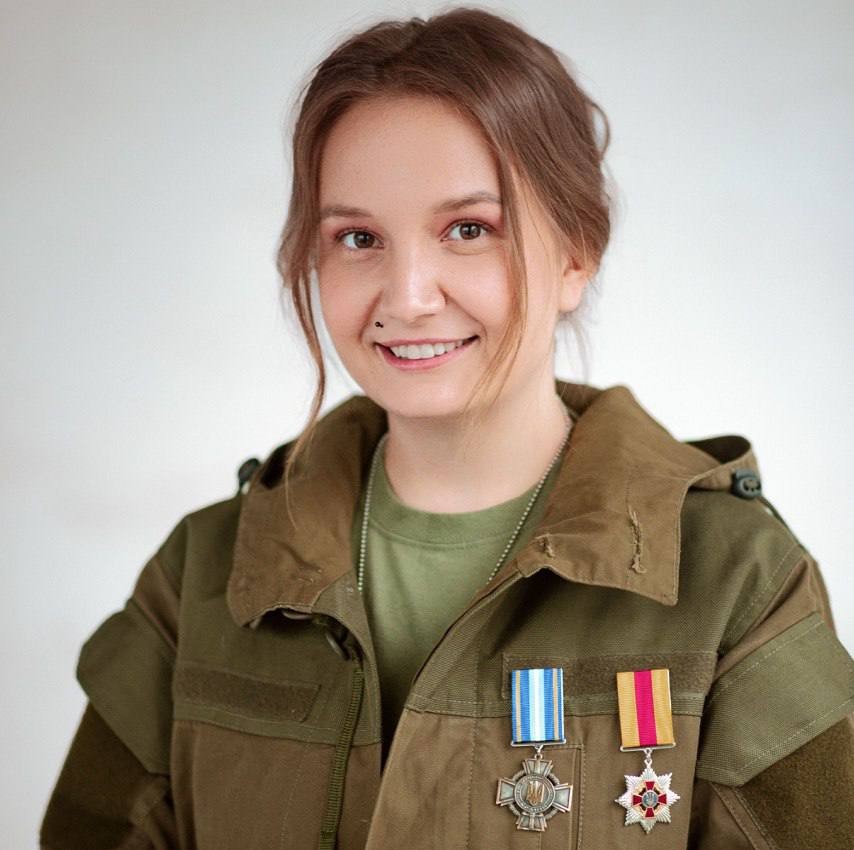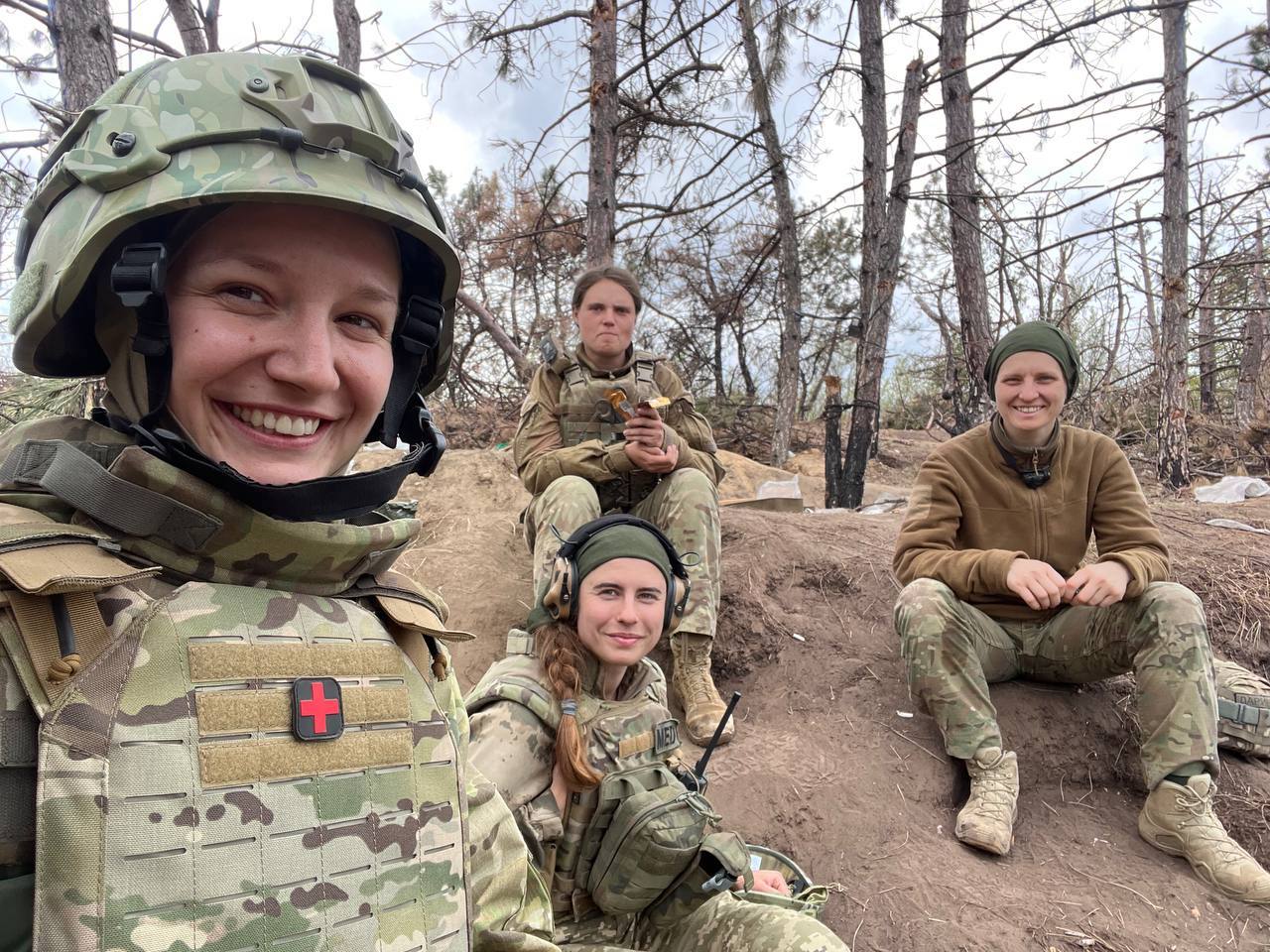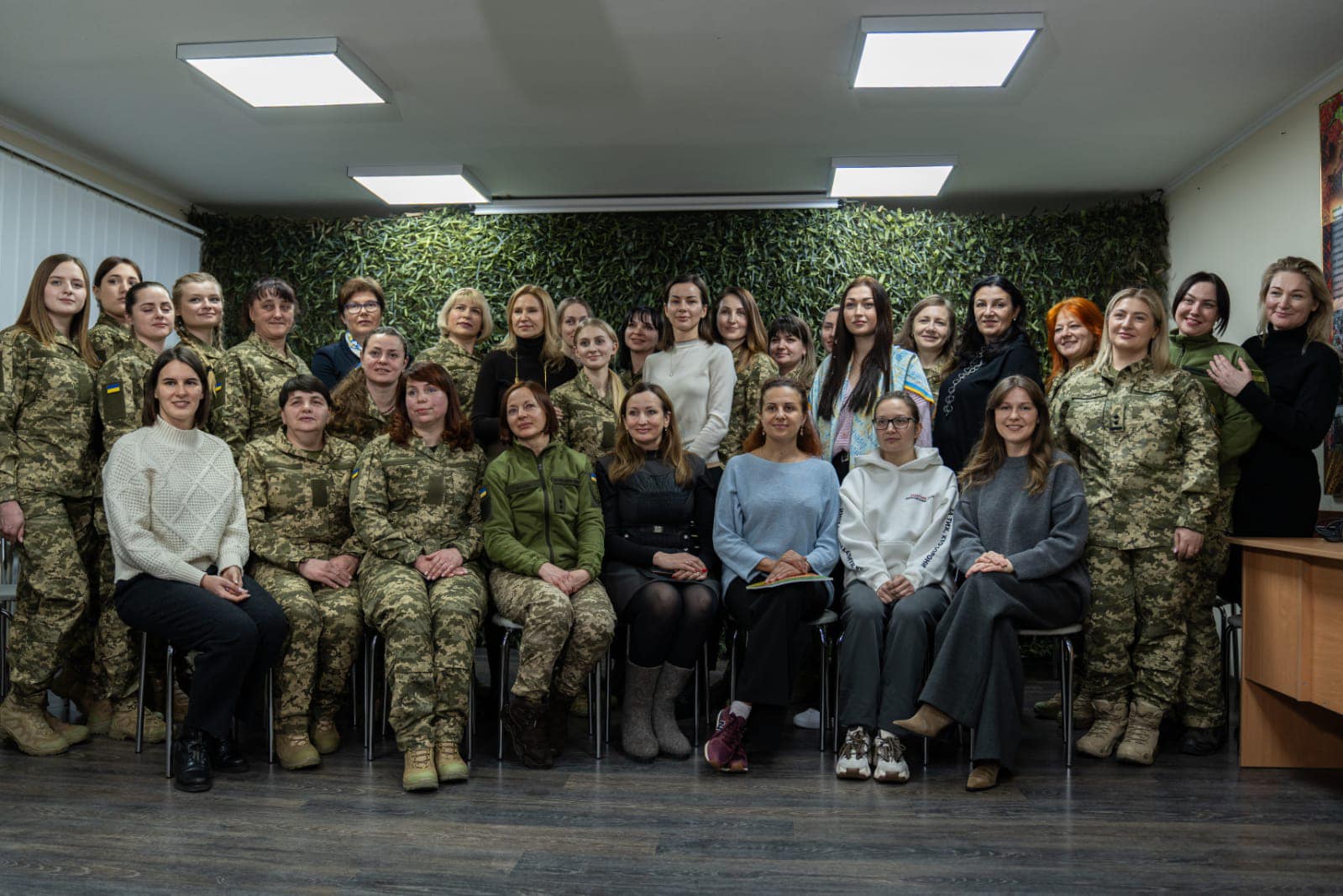No Longer Invisible: How a Veterans Organization Is Securing a Place for Women in Ukraine’s Armed Forces
The war with Russia began in 2014, yet it was not until 2018 that Ukrainian women were officially allowed to hold combat roles in the armed forces. Prior to that, they could serve in assault units but were listed as cooks or seamstresses. The change was possible thanks to the advocacy project Invisible Battalion. Out of its ranks grew the Women Veterans Movement, a civic organization that fights for women’s rights in the armed forces and supports the reintegration of female veterans in civilian life. When Russia’s full-scale invasion began, the movement also established a charitable foundation to provide essential supplies to women on the front line.
Kateryna Pryimak, a veteran and the head of the Women Veterans Movement, explains why increasing the visibility of women in the military benefits everyone.

The Women Veterans Movement was founded after the law was changed to grant women equal rights in the military. Why then?
When we realized the law was about to pass, we understood that this wasn’t the end goal. Opening the door to women at the front meant it was time to adjust the space itself to suit them. By then, our Invisible Battalion community had already formed, and we decided that we—women veterans—were the ones to take on systemic change in the security and defense sector.
Gaining formal access to combat roles was our first priority. But even after rights were equalized, things didn’t change overnight. Say there was a commander who believed women had no place in the armed forces—the law didn’t change his personal opinion.

And, for example, the leader of our movement, Andriana Arekhta, returned to service in 2022, but her military ID still listed her as a “seamstress”. Nothing had been updated on paper. How could she receive combat awards or explain a combat injury if, formally, she was a seamstress? So we had a lot more work to do.
We also needed to address issues like sexual harassment and violence in the military. While these aren’t exclusively gender issues—they’re about human rights—when you introduce the gender lens, it helps bring these problems to light and sparks public discussion.
Do reintegration challenges differ for women and men veterans?
Some reintegration tools are universal and used by male and female veterans. But even just for men, one-size-fits-all solutions don’t always work. When we apply a gender lens, we can more clearly see who benefits from which services.
For example, veterans often need retraining before finding new jobs. A woman veteran may have children and to attend training she may need a nanny. Sure, men may also have children. But a gender-sensitive system builds that support from the start, making it available for everyone. Veterans need to be approached from many angles: Are they wheelchair users? Do they live in urban or rural areas? Gender is just one more key factor in making services more targeted.
What are the organization’s goals for reintegrating women veterans?
Our goal is to support a woman veteran until she’s able to support herself. For example, you can’t learn a new profession or return to work if you’re struggling with depression or health issues. Health is the foundation everything else builds on. Ideally, we want every person to be able to recover after war. That requires large-scale changes in veteran policy.
If we’re talking about people with disabilities, the infrastructure of entire cities needs to change. Step One in returning to social life is being able to leave your house. But for the service sector—restaurants, cinemas etc.—to become inclusive, people with disabilities need income to participate in those spaces. Which means creating inclusive workplaces.
Sometimes we don’t even know where to start. And nothing about our current conditions is like a lab experiment.
How can we talk about a veteran’s return to peaceful life when peace doesn’t currently exist in Ukraine?
And how does that affect your strategy?
Now there’s a cycle in our work: we try to be there for women at every stage. During active combat, veterans become first-wave reserves. Whether rehabilitated or not, they return to the system. At the recruitment stage, we offer consultations and hope to build more extensive training in the future. Once a recruit becomes an active-duty soldier, she might face rights violations or need equipment at the front. We help through our organization and our charitable foundation. When she becomes a veteran, then we help with rehabilitation and reintegration.

How did the organization transform itself at the start of the full-scale invasion?
Our team was small—just seven women veterans and an accountant. On February 23, our leader Andriana called and said, “I’m at my unit. If they attack, we’ll fight. If not, we’ll come home. But it’s all on you now.”
But it wasn’t just me. My sister-in-arms Kuba, whom I had served with before, was still in Kyiv. When the invasion began, my first thought was: we need a new space for a large headquarters. Kuba helped find one. At first, we both wanted to go to war as paramedics, but the calls started pouring in: this unit needs something, that person has supplies... So we started sourcing gear and sending it to the front.
At one point, we transferred €70,000 abroad through a woman we didn’t even know. And you know what? She brought back everything we needed. It was a miracle—no one scammed us in all that chaos. Before that, our organization had no charity component. But when we saw the need, we stepped up.
Everyone talks about women needing proper uniforms and boots. But people forget: women at the front need weapons, vehicles, drones—just like the men.
It’s important to note that, alongside the charitable foundation, we remain a civic organization. Because you can keep collecting donations and throwing money into the war machine—but as a civic group, you can also help shape the systems so that, ideally, you’ll need to throw in a little less.
Are there areas you’d like to expand but lack resources?
I’d love to develop our Drone Lab into a proper military-industrial project—a literal drone factory. But, above all, I want our community to remain a real community, where we support each other. We haven’t yet tapped all the possibilities that exist.
Tell us about your Poltava branch, and are you planning others?
Our Poltava hub is actually working toward developing the city’s military-industrial capabilities. And, interestingly, one of our members is currently acting as mayor of the city.
Overall, our earlier branches had more tragic fates. One was in Bakhmut—obviously no longer functioning. Thankfully, both women from that hub are alive and now serving. We had a branch in Lviv, but one leader went missing and the other moved away due to post-traumatic stress disorder. We still want more local branches and are now working on two.
What role do men play in your movement?
Men are our brothers-in-arms, our partners, and sometimes our volunteers. At the start of the full-scale invasion, many men joined us as volunteers—but they usually didn’t stay long. They’d head to the front. So they’re our allies. But the movement will always have a woman’s face.
What is your organization’s greatest achievement?
We kept the community together.
I’m proud that ordinary women built an organization with real weight, name recognition, and credibility.
We used to have to push every story into the media. Now we can’t keep up with journalists’ requests. A woman in the armed forces is no longer invisible.